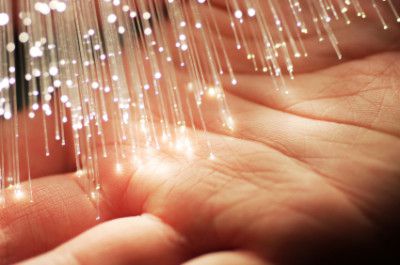From our front-page news:
For those of us who use the Internet for a bit more than e-mail or browsing the web, the desire to have a fatter connection is usually hard to avoid - you know, unless you happen to have a personal OC/3 line. Virgin topped the charts last week though, when they announced deployment of their 200Mbps net connection, currently in very limited tests in Ashford, Kent, UK. The problem though, is that currently, you'd never see such speeds from a home connection.
Ars takes a look the reasons why, and they vary from hardware limitations to technical limitations. As it stands today, most people don't have a gigabit network, which is exactly what you'd need to handle these speeds. Otherwise, you'd be limited to a 100Mbps connection, half the potential. But even if you do have such a connection, there are other factors to weigh in... such as overall load on the community network.
Bandwidth is usually shared and split up between a neighborhood, and if someone on there had essentially the equivalent of 20 regular broadband connections, that's bound to cause some bottlenecks. The other limitation are the servers you're connecting to yourself... chances are very few, if any, download servers will allow such speeds on a per-user basis. I at one time managed to download a file at 10MB/s off another server from our server, which was impressive, but that's still only half of 200Mbps, roughly.
While impossible now, I'm sure such speeds won't always be impossible. As for those with anything more than 10Mbps down and 1 Mbps up... I'm jealous. I feel like I'm stuck in the stone age here!

Each node on a cable system is set up in a loop, with every home on that node (up to several hundred) sharing the total bandwidth. Verizon's FiOS also shares, but it divvies up 2.4Gbps between 32 homes; DOCSIS 3.0 cable systems can share around 160Mbps with up to 400-500 homes. Even during peak periods, the line is filled with data only about 10 percent of the time, so the "oversubscription" model generally works well—but heavy use by many users will cause slowdowns, especially on the upstream link.
Source: Ars Technica
Ars takes a look the reasons why, and they vary from hardware limitations to technical limitations. As it stands today, most people don't have a gigabit network, which is exactly what you'd need to handle these speeds. Otherwise, you'd be limited to a 100Mbps connection, half the potential. But even if you do have such a connection, there are other factors to weigh in... such as overall load on the community network.
Bandwidth is usually shared and split up between a neighborhood, and if someone on there had essentially the equivalent of 20 regular broadband connections, that's bound to cause some bottlenecks. The other limitation are the servers you're connecting to yourself... chances are very few, if any, download servers will allow such speeds on a per-user basis. I at one time managed to download a file at 10MB/s off another server from our server, which was impressive, but that's still only half of 200Mbps, roughly.
While impossible now, I'm sure such speeds won't always be impossible. As for those with anything more than 10Mbps down and 1 Mbps up... I'm jealous. I feel like I'm stuck in the stone age here!

Each node on a cable system is set up in a loop, with every home on that node (up to several hundred) sharing the total bandwidth. Verizon's FiOS also shares, but it divvies up 2.4Gbps between 32 homes; DOCSIS 3.0 cable systems can share around 160Mbps with up to 400-500 homes. Even during peak periods, the line is filled with data only about 10 percent of the time, so the "oversubscription" model generally works well—but heavy use by many users will cause slowdowns, especially on the upstream link.
Source: Ars Technica
